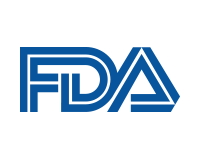U.S. Department of Health and Human Services
ORCID IDs
http://orcid.org/0000-0001-5036-322X
Date of this Version
2018
Document Type
Article
Citation
2018 John Wiley & Sons Ltd. |
Abstract
Providing nutrition information at the point of purchase is one approach that can be used to help consumers adopt and maintain a healthy diet. Previous research has examined consumer self‐reported notice and use of the information as well as how the design of the information affects its attention and use in a laboratory environ‐ ment using eye‐tracking methodology. This study advances the literature by applying eye‐tracking methodology to explore consumer visual and choice behavior in a real shopping environment, and by recognizing that nutrition information competes with other visual stimuli in the store and consumers are vulnerable to a “limited attention span” for nutrition information in a shopping setting. Data came from a cross‐sec‐ tional survey conducted in two grocery stores in the United States in July 2014 with a convenience sample of 60 grocery shoppers while they were selecting and buying items from one of three product categories (ready‐to‐eat cereal, snacks, and soup). The study finds that point‐of‐purchase nutrition information faced strong competi‐ tion for participants’ attention from other visual elements in a real shopping environ‐ ment and the attention is dominated by nonnutrition elements, particularly brand/ product name, product imagery, and product pricing. Nutrition‐related information, on the other hand, received much less attention, with claims and front‐of‐package nutrition symbols seen by more participants than the Nutrition Facts label. The study suggests that to more effectively enable nutrition information to “catch the eyes” of shoppers at the point of purchase, increasing consumer exposure to the information and enhancing shopper education may merit further investigation.
Included in
Dietetics and Clinical Nutrition Commons, Health and Medical Administration Commons, Health Services Administration Commons, Pharmaceutical Preparations Commons, Pharmacy Administration, Policy and Regulation Commons


Comments
Int J Consum Stud. 2018;42:557–565. wileyonlinelibrary.com/journal/ijcs